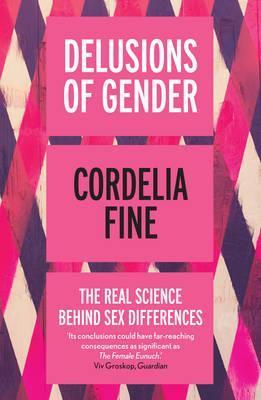More on this book
Community
Kindle Notes & Highlights
They were then given a GRE-like exam that had both maths and verbal problems. Men in both conditions, and women who had seen neutral ads, attempted more maths problems than verbal ones. But women who had seen the sexist ads showed exactly the opposite pattern, avoiding the maths questions. Their career aspirations were also influenced, with a flipping of occupational preferences, from those that require strong mathematical skills (like engineer, mathematician, computer scientist, physicist and so on) to those that depend more heavily on verbal abilities (such as author, linguist and
...more
he ‘mistakenly assumed that the typical mannerisms of his Harvard colleagues were necessary for success in science.’
interest is not impervious to outside influence,
‘[s]hortly after I changed sex, a faculty member was heard to say “Ben Barres gave a great seminar today, but then his work is much better than his sister’s.”’2 Similar stories cropped up in a recent interview study of twenty-nine female-to-male transsexuals.
one recent study more than 100 university psychologists were asked to rate the CVs of Dr. Karen Miller or Dr. Brian Miller, fictitious applicants for an academic tenure-track job. The CVs were identical, apart from the name. Yet strangely, the male Dr. Miller was perceived (by both male and female reviewers) to have better research, teaching and service experience than the luckless female Dr. Miller.
But it’s worth considering philosopher Neil Levy’s argument that the idea that women are predominantly hardwired for empathising while men are hardwired for systemising ‘is no basis for equality. It is not an accident that there is no Nobel Prize for making people feel included.’2 When a child clings on to a highly desirable toy and claims that his companion ‘doesn’t want to play with it’, I have found that it is wise to be suspicious. The same scepticism can be usefully applied here.
Demand a story that includes a clear hormonal beginning, a neat neural middle, and a convincing behavioural end and the best that researchers have to offer involves a small area of the brain stem that innervates the penis.
At this point in the book, you may have begun to be a bit suspicious of phrases like ‘female approach to the world.’
(Interestingly, one of the staples of the boyish toys, the Lincoln Logs construction set, recently had to be replaced because girls liked it so much!)
If, by the way, you are curious about the choice of a pan as a girlish toy, you are not alone. Although it is true that primatologists regularly uncover hitherto unknown skills in our nonhuman cousins, the art of heated cuisine is not yet one of them.
Did he really know not a single weedy intellectual, nor one muscular chump, to provoke him to wonder whether physical strength really was correlated with tenacity of ‘brain action’?
To illustrate this point, some researchers recently scanned an Atlantic salmon while showing it emotionally charged photographs. The salmon – which, by the way, ‘was not alive at the time of scanning’ – was ‘asked to determine what emotion the individual in the photo must have been experiencing.’ Using standard statistical procedures, they found significant brain activity in one small region of the dead fish’s brain while it performed the empathising task, compared with brain activity during ‘rest’.
people find scientific arguments more compelling when accompanied by an image showing brain activation rather than, say, a bar graph showing the same information.
one study found that women given a journal article to read that claimed that men are better at maths because of innate, biological and genetic differences performed worse on a GRE-like maths test than women shown an essay saying that men’s greater effort underlies their superior performance.
Minnesota state assessments of eleventh graders to see how many boys and girls scored above the 95th and 99th percentile (that is, scored better than 95 percent, or 99 percent, of their peers) an interesting pattern emerged. Among white children there were, respectively, about one-and-a-half and two boys for every girl. But among Asian American kids, the pattern was different. At the 95th percentile boys’ advantage was less, and at the 99th percentile there were more girls than boys.15 Start to look in other countries and you find further evidence that sex differences in variability are, well,
...more
Then within girls, interesting patterns emerge. Asian American girls are not underrepresented, relative to their numbers in the population. But that doesn’t mean that it’s even simply a white girl problem. Non-Hispanic white girls born in North America are sorely underrepresented: there are about twenty times fewer of them on IMO teams than you’d expect based on their numbers in the population, and they virtually never attend the highly selective MOSP. But this isn’t the case for non-Hispanic white girls who were born in Europe, immigrants from countries like Romania, Russia and the Ukraine,
...more
[O]ne child believed that men drank tea and women drank coffee, because that was the way it was in his house. He was thus perplexed when a male visitor requested coffee. Another child, dangling his legs with his father in a very cold lake, announced ‘only boys like cold water, right Dad?’ Such examples suggest that children are actively seeking and ‘chewing’ on information about gender, rather than passively absorbing it from the environment.
One mother who insisted on supplying her daughter with tools rather than dolls finally gave up when she discovered the child undressing a hammer and singing it to sleep. ‘It must be hormonal,’ was the mother’s explanation. At least until someone asked who had been putting her daughter to bed.6


